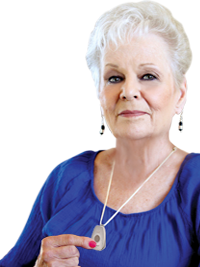Coping with Bladder Problems
The Food and Drug Administration, or FDA, is a United States
government agency. It's FDA's job to make sure drugs and other
medical treatments work and are safe.
Do You Have This Problem?
If you sometimes wet yourself, you are not alone. Millions
of adults have this problem, called "incontinence." This is
when urine leaks out before you get to the bathroom. You may
think that the only way to deal with this problem is to wear
adult diapers, or pads. But today there are better ways to treat
this problem, including taking medicines.
With proper treatment, you will not have to worry about getting
rashes, sores, or bladder infections; problems having sex; or
being unable to sleep, go out in public, or meet with friends.
This brochure tells about the many ways to treat this problem
called incontinence.
What Causes Incontinence?
There are many reasons adults may leak urine. Sometimes it's
caused by an illness, and when the illness goes away, so does
the incontinence. For example, bladder infections and, if you
are a woman, infections in the vagina can cause incontinence
for a short while. Being unable to have a bowel movement or
taking certain medicines also may make it hard to control your
bladder.
Sometimes incontinence lasts longer. Then the urinary leakage
may be caused by:
- a weak bladder
- weakening of muscles around the bladder. This happens with
women who have had children. Sometimes the weakened muscles
cause urine to leak out when you cough, laugh, sneeze, or
do a certain activity.
- a blocked urinary passageway
- damage to the nerves that control the bladder
- diseases, such as arthritis, that limit movement.
Facts About Incontinence
- There are many good ways to treat incontinence.
- Women are more likely to leak urine than men.
- Incontinence, or urinary leakage, is not normal at any age.
Older people are more likely to have it, though.
- Incontinence can be stopped or decreased in almost everyone--even
the very old and frail.
Treatment
There are many ways to treat incontinence, from exercises to
surgery. Ask your doctor what is best for you.
Bladder or habit training. This will train your bladder
to hold urine better. Your doctor may ask you to urinate at
set times, such as once every hour. If you stay dry during these
times, you may be told to wait longer before going to the toilet--for
example, every one-and-a-half-hours. The doctor also may tell
you not to drink beverages with caffeine--such as coffee, tea
and colas. You may want to cut down on how much you drink before
going to bed. But drink your usual amount of fluids during the
rest of the day.
Bladder exercises. These help make the muscles around
the bladder strong so you can hold your urine in your bladder
longer. They are easy to do--tighten the muscles that you use
to stop yourself from urinating. Keep the muscles tightened
for about 4 seconds to 10 seconds. Then relax the muscles for
the same amount of time. Increase the number of times you do
this over several weeks. The doctor may also suggest using a
small device that you put in your vagina or rectum, the low
end of the bowel. The device gives a painless electrical pulse
that exercises the muscles. This helps the muscles get stronger
quicker.
Drugs. Some common ones are Detrol, Cyctospaz, Ditropan,
and Levsin. You must have a prescription from a doctor to get
these drugs.
Surgery. Surgery can fix problems such as blocked areas.
It also can move the bladder so it isn't bumping into another
body part, make the bladder bigger, and make weak muscles stronger.
A surgeon can also put in the body a small device that acts
on nerves to control bladder contractions.
Catheters. If nothing else helps, the doctor may suggest
catheters, thin tubes placed in the bladder by a doctor or by
the person. Both drain the bladder for you, sometimes into an
attached plastic bag.
Other Treatments for Women Only
Throw-away Patch. Sold in drug stores as UroMed or Miniguard
Patch, the patch is about the size of a quarter and is sticky
on one side. The woman puts the sticky side over her urinary
opening. The patch helps hold in urine. It is not good for heavy
leakage and may not always control medium leakage. Women with
leakage that is more than light may need to use a panty liner
with the patch. The patch can be used for two to three hours
at a time during the day, and all night long. You take off the
patch to urinate and when done, put on a new one.
A Plug, called the Reliance Urinary Control Insert.
This tiny device must be prescribed by a doctor. You put it
in your urethra, the urinary passageway. It helps prevent leakage.
To urinate, you remove the insert, and, when you're done going
to the bathroom, put in another one.
More Treatments for Women Only






